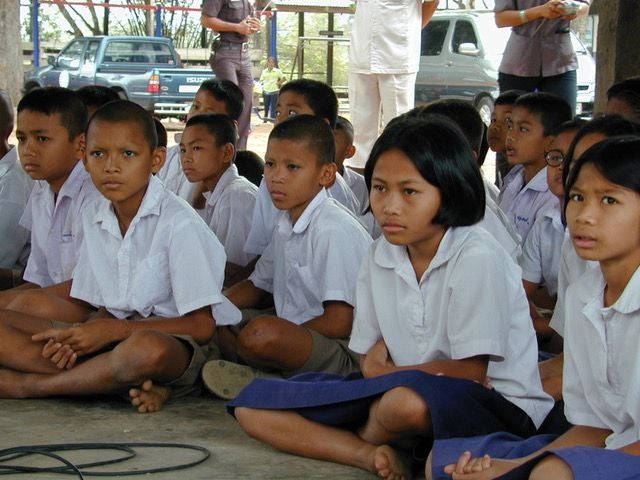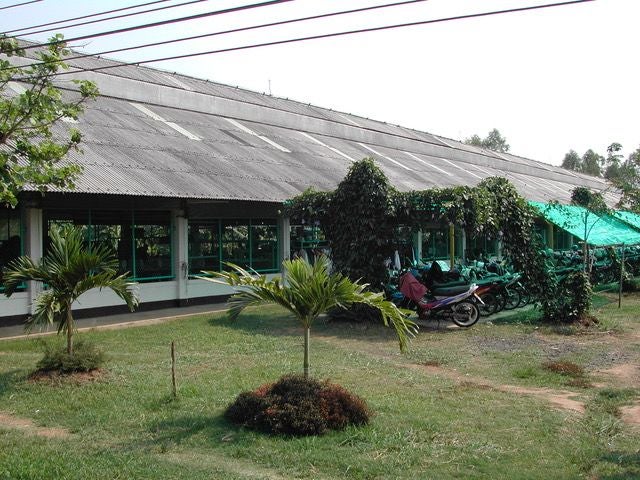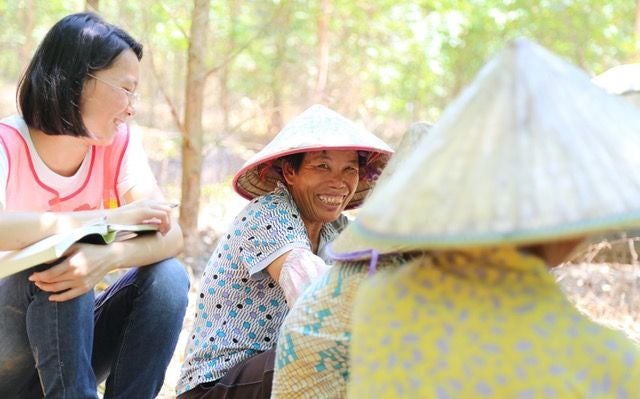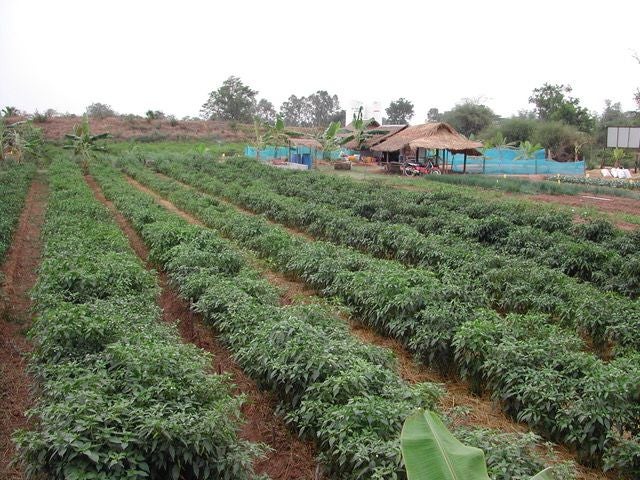
Global Human Rights Hub Fellows Blog
I have been fortunate over my 35-year career to consistently manage programs and teams at the intersection of environmental impacts and human rights. In government and business my work has allowed me to experience how placing human rights at the center of actions to address climate change can improve outcomes in both areas.
Large investments will be made to address climate change
To address climate change governments and businesses are investing substantial resources to reduce CO2 emissions. 1 2 If we are to effectively address climate change, these investments need to increase dramatically.3 The United Nations Intergovernmental Panel on Climate Change (IPCC) estimates we need a global investment of $2.4 trillion just in energy systems by 2035.4 Starting to remake the energy sector has consumed the bulk of climate change investments made to date.5
Future investments to offset climate impact will fund sustainable development projects
Sectors not related to energy receive substantially less investment than is needed to create change. In 2016, climate initiatives in agriculture and forestry received only $9 billion of funding.6 Investments in projects we think of as sustainable development also need to increase to meet IPCC’s science-based CO2 reduction targets.7 8 Among the largest opportunities to reduce CO2 is bringing better cookstoves to the developing world.9 10 In my work I’ve seen decades of efforts to implement inadequately funded cookstove projects.11 Today, a well-designed cookstove project can become a high-impact CO2 reduction project while still achieving traditional sustainable development goals.
Future investments to offset climate impacts can accomplish human rights goals
There are many areas where outcomes of investments to reduce CO2 emissions can be improved by integrating human rights into the approach. What enables this connection is quantification of the CO2 reduction potential of specific actions to advance human rights. A major step in quantification is accomplished by the book Drawdown, The Most Comprehensive Plan Ever Proposed to Reverse Global Warming, edited by Paul Hawken. Project Drawdown, the ongoing project to refine and implement the findings of the book is the first, and so far the only, comprehensive quantitatlve assessment and vetting of climate change solutions. The methodologies Project Drawdown uses are transparent with details provided for each of the 83 solutions quantified to date.12
The examples below are some of the areas where, from my work, I see opportunity to merge human rights and climate change mitigation efforts. The list is illustrative, not exhaustive. There are many more opportunities than we have room for here.
Investing in the Education of Girls and Family Planning
Project Drawdown quantified and rank ordered 83 different opportunities to reduce CO2 over a period of 30 years. They calculate ensuring all girls and women receiving “12 to 13 years of education” and “high quality family planning services” yields climate benefits only surpassed by renewable energy, eating less meat, and reducing food waste.13

To reach this conclusion they calculated how education raises women’s standard of living and reduces per capita emissions. They also calculated how both actions define a pathway to reaching the U.N. medium goal population projection of 9.7 billion. Fewer people with less impact on the planet creates less CO2.14
Education of women and girls is not widely considered to be a climate related effort. The potential climate benefits of this work are not adequately measured or communicated. To advance the discussion we need more, and more detailed, examples and data. The opportunity suggested here is to integrate meaningful climate change measurements into efforts to educate women and girls.
Investing in Microfactories
From the early 1990s until 2009, two Nike suppliers operated about 100 small stitching centers in rural Thailand, each employing 75 to 300 people.15 In 2003, my team at Nike assessed six of these micro-factories in different parts of the country. Our findings typify the benefits of micro-factories, whether rural or urban.16

We found micro-factories are more integrated into the fabric of their communities, making it much harder to use child labor or forced labor and increasing the ancillary local jobs these factories create.
Our assessment found the small size and lower energy demands of these micro-factories meant they could be relatively easily converted to, and efficiently operated on, 100% renewable energy. As is the case with many micro-factories, we found they cost less to operate, per unit of production, than larger factories.
Increasing the Forest Land Rights of Indigenous Peoples
Maintaining and restoring forests is one key to climate stability.17 Secure land tenure (legal ownership or rights to hold land) is among the most certain pathways to protecting forests and increasing the economic empowerment of indigenous peoples.18 Indigenous peoples have secure legal tenure to about 3 billion acres of forest. Increasing the acreage of forests under the control of indigenous peoples to approximately 7 billion acres by 2050 would reduce CO2 emissions on the same order as upgrading all the world’s lighting to LEDs,19 while simultaneously increasing economic empowerment of indigenous peoples.

Interviewing migrant forest workers ofthe Zhuang indigenous minority in China to understand their needs
Investing in Women Farmers
Agriculture is among the largest opportunities to put human rights at the center of actions to mitigate climate change. Efforts by governments, companies, and farmers to address the climate impacts of agriculture are evolving rapidly. Walmart, General Mills, and other companies are making substantial commitments to implement “regenerative agriculture” in their supply chains.20 21 “Regenerative agriculture” is a set of farming practices that increase soil health by removing carbon from the atmosphere and sequestering it in the soil.22 “Climate Smart Agriculture” is evolving as a holistic set of climate best practices for agriculture.23 “Climate Smart Villages” brings these concepts together in the context of a community.24 25
Helping women farmers through climate smart villages presents a great opportunity to unite human rights and climate change goals in a single set of actions. Globally, women make up less 15% of agricultural landholders. Even when they have legal right to land, they are less likely to possess documentation of their ownership.26 This severely limits their ability to accomplish basic tasks of farming, such as accessing credit to buy seeds or signing contracts with customers.27 Increasing women’s land rights empowers them economically and socially within their communities.28 29 The CO2 reduction potential in impressive. Addressing agriculture in a sophisticated, integrated manner can reduce CO2 by amounts similar to halting deforestation or electrifying transportation.30

Conclusions
Putting human rights at the center of climate change mitigation creates better outcomes. There are many more opportunities to make investments that achieve both climate change and human rights goals than can be presented here. To make progress toward a stable climate and achieve a more just society we must increase communication and interaction among human rights and climate change professionals in strategic planning, financing, implementation, and measurement of progress.
References
1 Newberger, Emma. “Biden’s budget proposal calls for more than $36 billion to fight climate change”. CNBC. May 28, 2021. https://www.cnbc.com/2021/05/28/bidens-budget-proposal-calls-for-36-billion-to-fight-climate-change.htm
2 Enkvist, Per Anders. “Globally, financing looks manageable but individual sectors will face big challenges” in Pathways to a Low Carbon Economy. McKinsey. 2009.
3 Ibid.
4 Special Report: Global Warming of 1.5o C. United Nations Intergovernmental Panel on Climate Change (IPCC). August 9, 2021. https://www.ipcc.ch/sr15/
5 Yeo, Stephanie. Why climate cash is flowing and why it’s not enough. Nature (News feature). September 17, 2019. https://www.nature.com/articles/d41586-019-02712-3
6 Ibid.
7 Adler, Sami. “How Much Would It Cost To End Climate Change”. Global Giving. March 1, 2021. https://www.globalgiving.org/learn/cost-to-end-climate-change
8 United Nations. “Support Sustainable Development and Climate Action”. Accessed October 19, 2021. https://www.un.org/en/our-work/support-sustainable-development-and-climate-action
9 Lee, Carrie M. et al. “Assessing the Climate Impacts of Cookstoves: Issues in Emissions Accounting”. Stockholm Environment Institute, Working Paper. January 2013.
10 “Improved Clean Cookstoves”. Drawdown. Accessed October 20, 2021. https://drawdown.org/solutions/improved-clean-cookstoves
11 Lewis, Jessica et al. “Piloting Improved Cookstoves in India”. Journal of Health Communications, International Perspectives. Vol. 20, 2015. Issues Supplement 1: Advancing Communication and Behavior Change Strategies for Cleaner Cooking. April 3, 2015.
12 “Solutions”. Drawdown. Accessed October 20, 2021. https://drawdown.org/solutions
13 Ibid.
14 “Technical Summary: Healthcare and Education”. Drawdown. Accessed October 20, 2021. https://drawdown.org/solutions/health-and-education/technical-summary
15 “Rural Development with the Private Sector”. Population and Community Development Association, Bangkok, Thailand. Accessed October 22, 2021. https://pda.or.th/en/project-rural-industrial-development/
16 “Micro Factories.” BSR Sustainable Futures Lab: The Fast Forward. Business for Social Responsibility. Accessed October 18, 2021. https://www.bsr.org/en/emerging-issues/micro-factories
17 Popkin, Gabrielle. “How much can forests fight climate change?”. Nature. (News Feature) January 15, 2019. https://www.nature.com/articles/d41586-019-00122-z
18 “Secure Land Tenure”. Landesa. Accessed October 22, 2021. https://www.landesa.org/who-we-are/global-impact/
19 “Indigenous Peoples Forest Tenure”. “Forest Protection.” “LED Lighting”. Drawdown. Accessed October 20, 2021. https://drawdown.org/solutions/indigenous-peoples-forest-tenure
20 Klein, Jessie. “Walmart digs regenerative agriculture”. Green Biz. September 27, 2021. https://www.greenbiz.com/article/walmart-digs-regenerative-agriculture
21 “Regenerative Agriculture”. General Mills. Accessed October 22, 2021. https://www.generalmills.com/en/Responsibility/Sustainability/Regenerative-agriculture
22 “Regenerative Agriculture”. Center for Regenerative Agriculture and Resilient Systems. California State University, Chico. Accessed October 18, 2021. https://www.csuchico.edu/regenerativeagriculture/ra101-section/ra101-definitions.shtml
23 “Climate Smart Agricutlure FAO
24 Aggarwal, Pramod K. et al. “The climate smart village approach: framework of an integrative strategy for scaling up adaptation options in agriculture”. Ecology and Society. Vol. 23, No. 1, Article14. 2018.
25 Jagustović, R. et al. “Contribution of systems thinking and complex adaptive system attributes to sustainable food production: Example from a climate-smart village”. Agricultural Systems. 2019.
26 The Gender Gap in Land Rights”. Food and Agriculture Organization of the United Nations (FAO). Accessed October 18, 2021. https://www.fao.org/3/I8796EN/i8796en.pdf
27 “Secure Land Tenure”. Landesa. Accessed October 22, 2021. https://www.landesa.org/who-we-are/global-impact/
28 Ibid.
29 Kieran, Caitlin, et al. “Examining gender inequalities in land rights indicators in Asia”. Research Report. The International Food Policy Research Institute. January 2015.
30 “Conservation Agriculture”. “Abandoned Farmland Restoration”. “Farm Irrigation Efficiency”. “Regenerative Annual Cropping”. “Perennial Stable Crops”. Project Drawdown. Accessed October 25, 2021. https://drawdown.org
Phil Berry
Global Human Rights Hub Fellow 2021-2022
